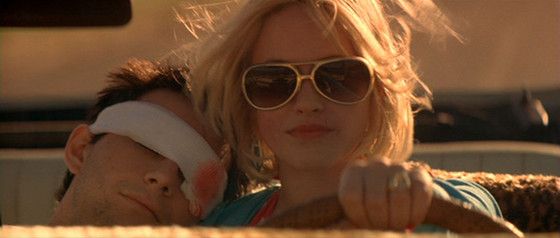
Tony Scott was a filmmaker who requires a lot of thought before compiling a top 10 list of his features. Not that there’s not enough to form a thoughtful and complete list, but because there’s too many phenomenal pieces of cinema competing with each other for space.
A maximalist in every sense of the word, he was a filmmaker enamored with atmosphere, minutiae, heartfelt characters, and extreme visceral action, obsessed with sound and fury and razzle-dazzle. He was an actor’s director, working with many people on multiple occasions (Hello, Denzel Washington), and knew how to cast his films from the biggest leading roles to the smallest of supporting turns.
He was also a visual pioneer, setting various aesthetic templates throughout the years, with the trio of Top Gun, Man on Fire, and Domino becoming stylistic trendsetters, inspiring various filmmakers and artists throughout a variety of mediums to borrow his bold and often times impressionistic techniques.
The list below is, at best, wholly subjective, as enjoyment from Scott’s oeuvre can spread from his early years (The Hunger being one of the best debuts ever), to commercial-filmmaking hybrids (his BMW Films entry, Beat the Devil, is beyond astonishing on a formal and creative level), to guilty pleasures (Days of Thunder has aged extremely well), and late career masterpieces that would cement him as one of the definitive visual artists of his generation. Or any generation.
1. Domino (2005)
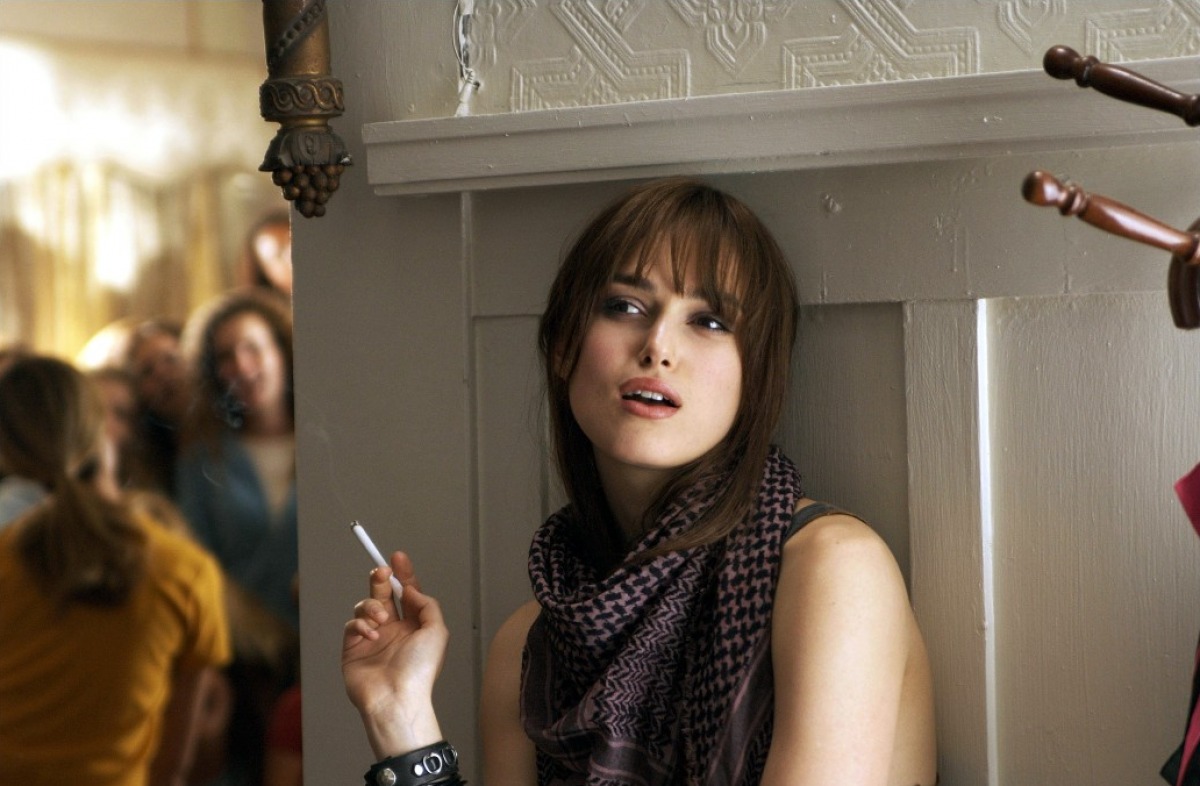
The sheer exuberance of Domino should have been noticed by critics and audiences at the time of its release in October 2005, but sadly, Scott’s passion project found few takers. This is easily Scott’s most divisive, most misunderstood film. Most people hate it. But some people consider it to be the apex of his career as a storyteller and stylist.
Boasting his most intricate script (by Donnie Darko/Southland Tales scribe Richard Kelly) and a wild cast of characters (Keira Knightley, Mickey Rourke, Edgar Ramirez, Mo’Nique, Christopher Walken, Dabney Coleman, Delroy Lindo and many others), this is a wild and crazy pseudo-biopic of bounty hunter Domino Harvey (the fantastic Knightley) that exists primarily as a showcase for Scott’s obsession with style.
Simply put, this is one of the most visually elaborate and sophisticated movies ever created. It resembles a form of cubist-style filmmaking, a hyper-stylized form of visual storytelling that feeds off of adrenalin, excitement, and raw visceral impact, using small, fragmented images to tell a complete picture and story.
What makes Domino work as a whole is that the narrative is as wild as the style. Also, many people forget that much of the film takes place through a cloud of mescaline, with much of the third act incorporating a trip aspect to the proceedings. And then there’s Domino herself – a wild and rebellious British model turned bounty hunter, the real Domino Harvey did in fact lead an insane-sounding life, but it probably wasn’t as over the top as Kelly’s crisscrossing and zigzagging script.
The filmmakers make it clear upfront that the filmmakers have taken liberties with the facts – there’s a graphic that reads: “Based on a true story…sort of.” What’s most noticeable about Domino is how aggressive it is, and how incredibly intricate the plotting becomes. Scott’s hyperventilating and exhilarating style would mean nothing if it wasn’t in service to an exciting plot with characters you like.
Knightley shredded her good-girl image with her balls-out performance in Domino; from the lap-dance scene to breaking Brian Austin Green’s nose to busting out the double machine guns during the finale, she grabbed the role with serious gusto and ran with it.
Mickey Rourke’s recent career resurgence really began here (and then continued with Sin City and The Wrestler) with a gruff and stern performance as Domino’s boss. And Edgar Ramirez, who would go on to blaze up the screen in the epic five hour terrorist biopic Carlos, busted out in a big way as Domino’s bounty hunter partner.
This film is a work for art. Starting with the obscenely amazing opening credits sequence and climaxing with an exploding casino and a massive, three-way shoot-out, the film is akin to a roller-coaster ride. It’s got big laughs (Walken is incredible as crass reality producer Jerry Heiss), a twist-filled plot, and enough visual fireworks for 10 movies. It’s everything you could ever want in a Tony Scott movie.
2. Top Gun (1986)
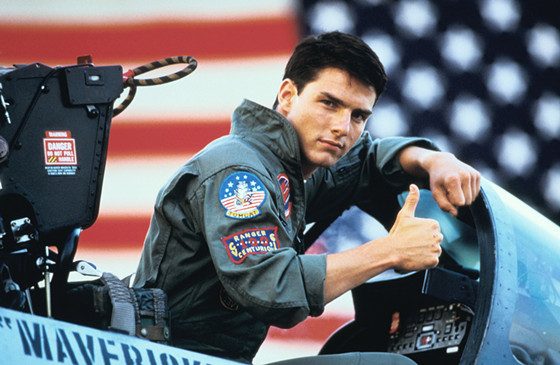
At this point in our culture, it’s impossible to discuss Top Gun with any amount of clear-eyed objectivity. The film is a milestone for all of its key contributors. For Scott, it served as his first worldwide smash-hit, and it established a dynamic partnership with producers Don Simpson and Jerry Bruckheimer. It’s also the film that got Scott out of director jail after the flopping of his debut, The Hunger.
For the Simpson and Bruckheimer, it was the movie that truly solidified them as the uber-producers of the 1980’s (Flashdance and Beverly Hills Cop came before; Cop 2 and Days of Thunder would immediately follow) before they came back into prominence in the mid 90’s after a bit of a dry spell. And for star Tom Cruise, it was his first runaway blockbuster sensation, his first taste of global superstardom, and the film that made him a house-hold name.
Top Gun is a product of its time in a way that so few films can claim to be. Released in the summer of 1986, the film played on the still lingering fears of war with the Soviets, and carried a rah-rah, jingoistic spirit that seems laughable nowadays but probably felt very honest at the time of release. It feels pointless to rehash the plot of Top Gun – anybody with a pulse has seen it and knows all about Maverick and Goose and Iceman and Jester and Hollywood and the rest of the crew.
Sure, the scenes on the ground pale in comparison to the ones up in the air (Jeffrey Kimball’s gorgeous cinematography is still a lesson in CGI-free perfection) and most of the dialogue is cheesy and pedestrian. But that’s not the point of Top Gun.
The film is all about machismo (a major theme in all of Scott’s work), and how men deal with expectations, loss, tragedy, acceptance, and success. Those classic scenes in the shower (or during a particular game of beach volleyball…) seem homoerotic in hindsight (and maybe they did upon first glance…), but what they’re really about is men trying to one up each other, trying to figure out how to best your opponent, and always remembering that there are no points for second place.
To say that Top Gun is one the manliest movies ever made would be understatement; you can practically smell the testosterone on the set. And that’s what’s so fun about it. And when you add in the ridiculously quotable one-liners (who knew that rubber dog shit originates from Hong Kong?) and the high-flying airborne camerawork (still unmatched to this day), then it’s no wonder that the film plays every Sunday on TNT and has become one of the most influential and iconic movies ever made.
3. True Romance (1993)
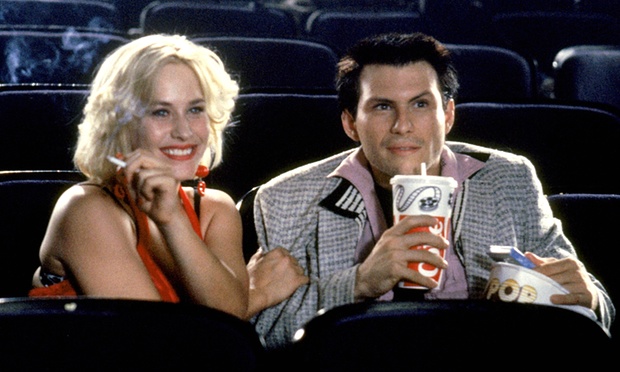
Tony Scott’s mid-career masterpiece was True Romance, which boasted the best screenplay that he ever worked with (Quentin Tarantino penned the amazing original script), and even if Tony softened QT’s original ending, even QT now agrees – it was the correct way to go.
Despite making violent action pictures throughout most of his career, Scott’s films always had one thing going for them: Heart. He was a filmmaker who genuinely loved his characters, flaws and all, so when it came to the climactic gun battle of True Romance, I’m not surprised that Scott wanted things to play out a bit differently than QT may have intended.
But I think most will agree that the marriage of Scott with QT was a match made in cinematic heaven, and the absurdly amazing cast of actors that this film possesses is still a roll call of amazing talent that’s rarely been equaled.
Mixing glossy images with gritty locales and staccato editing, the film is a supremely stylish, cheerfully profane, and absurdly entertaining action-movie fantasy about a comic-book reading, Bruce Lee/Elvis Presley loving geek (Christian Slater in a career best performance) who crosses paths with a hooker with a heart of gold (Patricia Arquette in a career best performance), and then gets mixed up with pimps, the mafia, the FBI, suitcases of cocaine, Hollywood movie producers, and a stoned-out Brad Pitt sitting on a couch smoking pot from a homemade bong made from a Honey Bear.
Tarantino’s colorfully vulgar voice can be heard in every frame and Scott’s hard-charging visual style can be felt at all times, creating an amazing cinematic experience. The insane supporting cast must be commented on: Christopher Walken at his scene-stealing best; Dennis Hopper, hitting unexpected grace notes to go along with his usual brand of hostility and anger; a young and thin James Gandolfini as a most lethal enforcer; Val Kilmer as the shadowy spectre of The King, constantly haunting Clarence’s mental state; a dreadlocked, one-eyed, totally rambunctious Gary Oldman playing the pimp from hell; Bronson Pinchot as a put-upon Hollywood pee-on who has to deal with his sleazy producer/boss Saul Rubinek, both giving hilarious performances of Tinseltown excess run amok; Samuel L. Jackson as a quickly dispatched hood who shares his lovely opinions regarding oral sex; and Michael Rapaport as the innocent caught up in all of the chaos, the kind of guy everyone has met at one time in their life, the lovable naïve friend who can’t get out of his own way.
There’s no point in rehashing the plot; you’ve either seen this film by now or you’re from the moon. And while it bombed at the box office and was met with surprisingly indifferent reviews at the time of its release, the film has rightfully become a major cult item, and many critics who panned it upon first glance seem to have come around on it.
Just thinking about True Romance produced the inspiration to eat a piece of apple pie with cheddar cheese on top, or maybe just some animal crackers. Only the gorillas, of course!
4. Man on Fire (2004)
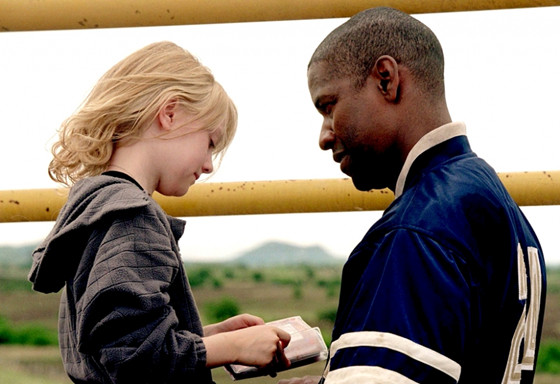
Man on Fire is such a bad-ass movie. It really is. You’ve got Denzel Washington as a one-man killing machine bent on revenge after the little girl (Dakota Fanning) he’s been assigned to protect gets kidnapped. Simple set-up, simple story. Brian Helgeland’s lean and mean script took its time setting up the relationship between Denzel and Dakota before her abduction, which gave real weight to the violence and bloodshed that Denzel unleashes after she goes missing.
It’s a straightforward narrative goosed by Scott’s desire to immerse the viewer in a hyperactive, extremely in-your-face style that grabs you by the neck and never lets up. Mexico, judging from Scott’s vision in Man on Fire, is a festering hell-pit, a place where violence and kidnapping are a common way of life (the film states that someone is kidnapped every hour in the country).
It’s a very Catholic film in many respects, and the moral questions it asks about violence, murder and revenge drive most of the pulpy but believable narrative. Washington’s hit-man character, Creasey, is a man of few words who has lived a damaged, violent life.
Clinging to the bottle and growing more and more unsure of himself in society, he has very little to live for, until he’s given a reason to care. It’s the classic cinematic hit-man scenario, and what Scott does in Man on Fire from a visual standpoint is thrust the viewer into Creasey’s burnt out psyche.
Subtitles race across the screen, images are blown-out to hot-whites, and every single edit feels like a pin-prick, as the increasingly disorienting style starts to feel perfectly normal – this is what a descent into a violent nightmare would be like.
Paul Cameron, Scott’s cinematographer on Man on Fire, really earned his money on this one. The film was greeted with mixed reviews overall (it has some serious lovers and haters) and did strongly at the box office. And it’s yet another title that seems to play every week on FX or Showtime.
5. Crimson Tide (1995)
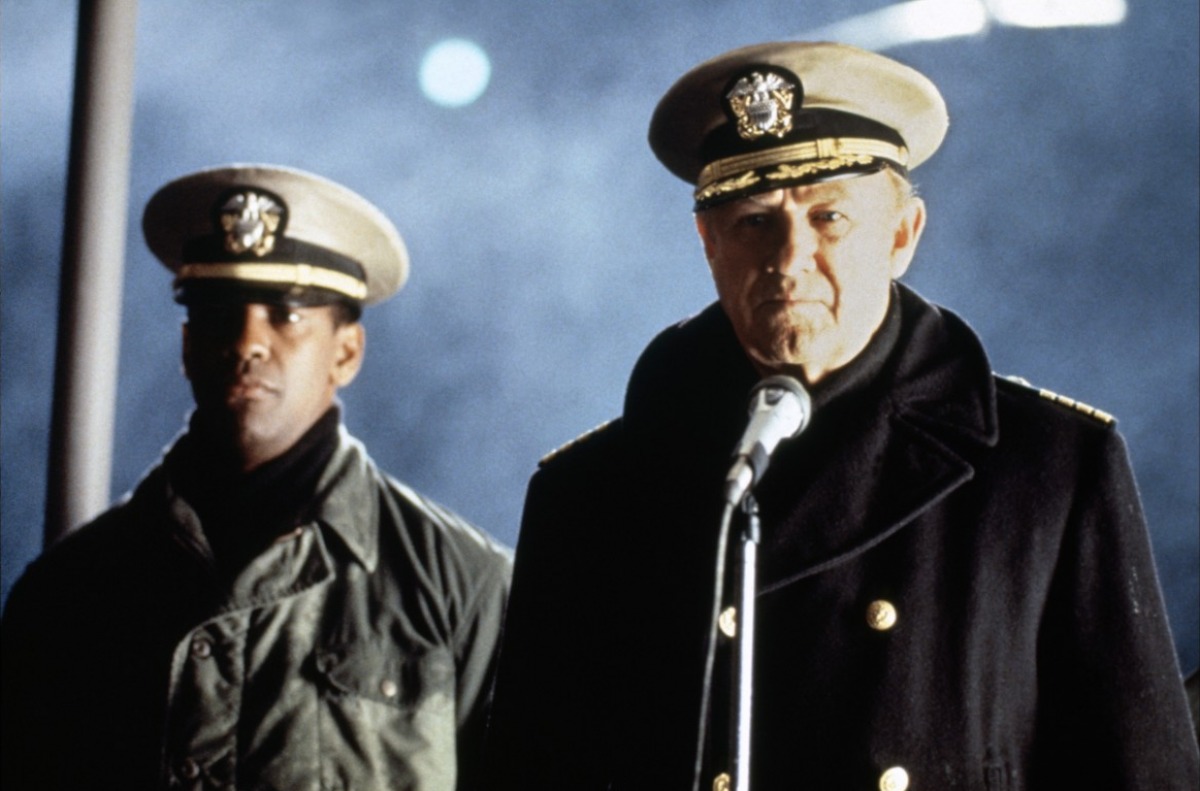
Crimson Tide is one the best submarine movie ever made. Tipping its cap to genre staples of the past while looking ahead to the future, this was a box office smash and critical success in 1995, and put Scott back on stable studio ground after the critical and commercial failure of True Romance.
It has two of the most dramatically commanding actors (Denzel Washington and Gene Hackman) giving two of their most intense performances, each one generously knowing when to back off to allow the other to go for the emotional jugular.
Michael Schiffer’s tight and smart script had zero fat on its bones and presented a thoroughly believable nuclear scenario, without ever going over the top. And Scott’s clear-eyed and extremely focused direction was placed mostly on his actors as opposed to his trademark visual splendor, creating a film that while looking tremendously detailed, is just as concerned with plotting and understandable motivation.
From the claustrophobic set design to the neon-lit interior of the sub, Scott and his cinematographer Dariusz Wolski created a sense of forward moving urgency in every single scene of Crimson Tide.
In a film where each second counts big-time for the characters and no scenes are wasted or unimportant, the filmmakers had to be up to the visual task to convey that intensity to the audience. Crimson Tide also has some great humor (mostly thanks to a Quentin Tarantino on-set re-write) to go along with all of the tough-guy dialogue and submarine jargon. This is yet another staple film for many people, a movie that gets better with age and repeated viewings.